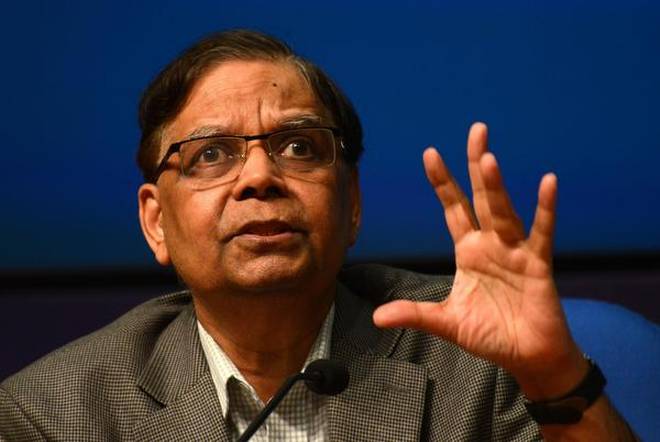Arvind Panagariya, former vice-chairman of the Government of India think-tank NITI Aayog highlighted many discrepancies and issues with the NYAY scheme of Congress party in an article published in Economic Times on March 30. The first puzzle according to Arvind Panagariya is that whether the Congress party would transfer 6,000 rupees to every family with income less than 12,000 rupees per month or the families would be given money till the total family income reaches to 12,000 rupees per month. In the first case, income many families whose income is less than 6,000 rupees would not reach the threshold and the families with more than 6,000 rupees would cross the minimum income target.
In the second case where every family would be given the amount which is short in 12,000 rupees per month, the total expenditure would shoot above 3.6 lakh crore rupees. If the minimum income of 12,000 rupees per month is guaranteed and a person is included in 20 percent which is included in NYAY, they would have no incentive to work hard if their income increases, the government would pay them lesser amount.
The Congress party said that the beneficiaries would be identified based on the 2011-12 National Sample Survey Office’s (NSSO). So the income of the household in 2018-19 would be decided by adding the per capital income growth between 2011-12 to 2018-19. But the problem here is that the income of some families might have shot up exponentially and some families would have moved southwards. These discrepancies could not be removed and hence NYAY would prove distortionary like MGNREGA and other welfare schemes.
As per calculations, 40 percent rural households and 10 percent urban households have less than 12,000 rupees per income. So, if Congress goes by its new minimum income line of 12,000 rupees per month, the net needs to be widened widely. As per Congress’ plan, every family would get 1,44,000 rupees per year through NYAY and almost 66,000 rupees per year would be spent on various subsidies and welfare policies. The effective transfer to every family would be 2 lakh rupees while on the other hand, a person with 3 lakh rupees would have to pay taxes although the money would be refunded.
The direct taxpayers are heavily concentrated in urban areas and tax on agricultural income is zero. So, NYAY scheme would create huge urban-rural division if implemented. There is already so much debate on Bharat vs India and another division is hard to afford.
Given the number of discrepancies and issues with the plan of the scheme, it seems that the party was in a hurry to release the scheme to reap the electoral benefits. However, the party said that it consulted top economists across the world including former RBI Governor Raghuram Rajan. “It’s surprising that the economists who advised Congress haven’t come forward to answer any of these questions,” wrote Arvind Panagariya. There is also a possibility that NYAY was never thought out seriously and it is just an electoral gimmick to fool the people.
Even if the above issues could be sorted out it is very clear that the expenditure to implement the scheme would well above 3.6 lakh crore rupees and that is the final problem with NYAY. The country does not have enough fiscal resources to spend on the scheme. Arvind Panagariya said, “The only silver lining to NYAY is that Congress has finally embraced cash transfers as an antipoverty instrument. This is in sharp contrast to UPA’s National Advisory Council (NAC), which insisted that all transfers had to be in kind.” As Panagariya has pointed out so many loopholes in the scheme, the brains associated with the scheme should take due cognizance and come with some good arguments which do not fall short on facts and data.
